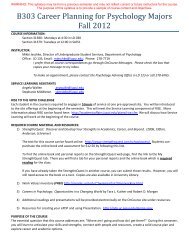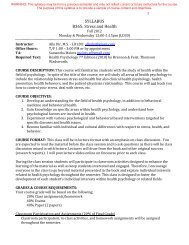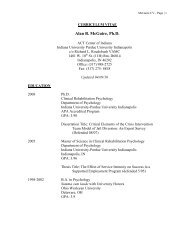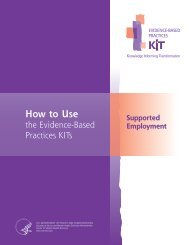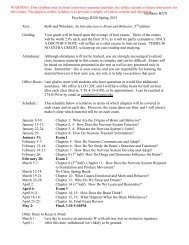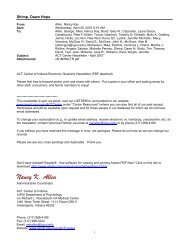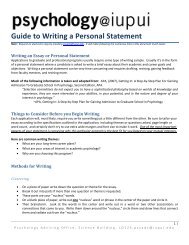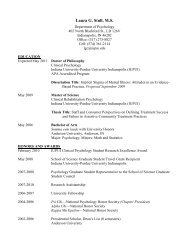Supported Employment: Training Frontline Staff - SAMHSA Store ...
Supported Employment: Training Frontline Staff - SAMHSA Store ...
Supported Employment: Training Frontline Staff - SAMHSA Store ...
You also want an ePaper? Increase the reach of your titles
YUMPU automatically turns print PDFs into web optimized ePapers that Google loves.
Basic characteristics of <strong>Supported</strong> <strong>Employment</strong><br />
• <strong>Employment</strong> specialists manage caseloads of<br />
up to 25 consumers.<br />
• <strong>Employment</strong> specialists provide only<br />
vocational services.<br />
• Each employment specialist carries out all phases<br />
of vocational service.<br />
• <strong>Employment</strong> specialists are part of the<br />
mental health treatment teams with shared<br />
decisionmaking.<br />
• <strong>Employment</strong> specialists function as a unit.<br />
• There are no eligibility requirements to enter the<br />
SE program.<br />
• Vocational assessment is an ongoing process.<br />
• The search for competitive jobs occurs rapidly<br />
after program entry.<br />
• Employer contacts are based on consumers’<br />
job preferences.<br />
• <strong>Employment</strong> specialists provide job options that are<br />
in a variety of settings.<br />
• <strong>Employment</strong> specialists provide competitive job<br />
options that have permanent status.<br />
• <strong>Employment</strong> specialists help consumers end jobs<br />
when appropriate and then find new jobs.<br />
• Individualized follow-along supports are<br />
provided to employers and consumers with<br />
no time limitations.<br />
• Vocational services are provided in<br />
community settings.<br />
• Assertive engagement and outreach are<br />
conducted as needed.<br />
How we know that <strong>Supported</strong><br />
<strong>Employment</strong> is effective<br />
SE gets results. The SE model has been the<br />
most extensively studied model of vocational<br />
rehabilitation for people with serious mental<br />
illnesses. Culturally diverse consumers and<br />
employment specialists have used the SE model in<br />
a variety of settings.<br />
A recent review of 17 studies consistently<br />
demonstrated that SE programs produced better<br />
vocational outcomes than comparison programs,<br />
such as prevocational programs, sheltered work,<br />
and Transitional <strong>Employment</strong> Positions.<br />
Across these studies, 58 percent of consumers who<br />
were in SE obtained competitive employment<br />
compared to 21 percent in comparison programs<br />
(Bond, et al., 2001). Specifically, consumers in<br />
SE programs were more successful in obtaining<br />
competitive work, worked more hours, and<br />
earned more from competitive employment than<br />
consumers receiving other vocational services<br />
(Bond, et al., 2001).<br />
No evidence of negative effects<br />
Practitioners, consumers, and family members<br />
are sometimes concerned that competitive work<br />
will be a stressful experience that may increase<br />
the chances of relapses and rehospitalizations.<br />
However, the research on SE has consistently<br />
found that no negative effects are related to<br />
participating in an SE program.<br />
Specifically, consumers who participate in SE<br />
programs do not experience more severe symptoms<br />
or higher levels of distress nor do they require more<br />
intensive psychiatric treatment, such as emergency<br />
room visits or psychiatric hospitalizations (Bond, et<br />
al., 2001).<br />
Some research shows that when consumers succeed<br />
in finding competitive work, improvements may<br />
occur in symptoms, self-esteem, and satisfaction<br />
with finances (Bond, et al., 2001; Mueser, 1997).<br />
Most consumers in SE programs who obtain<br />
employment work part time and are able to keep<br />
their benefits (i.e., Social Security and health<br />
insurance). Work often becomes a meaningful part<br />
of their lives. (For more information about how<br />
work may affect benefits, see Module 2).<br />
Module 1 4 Basic Elements and Practice Principles



